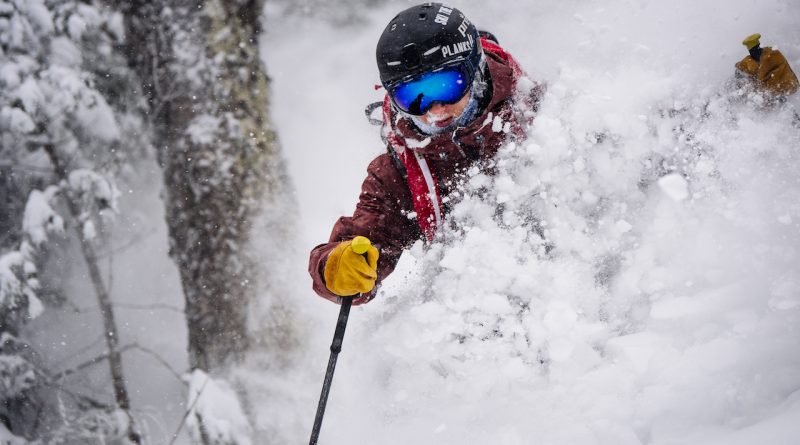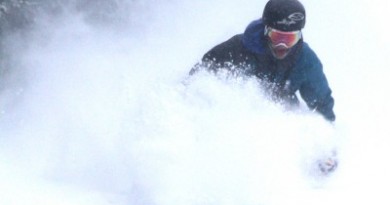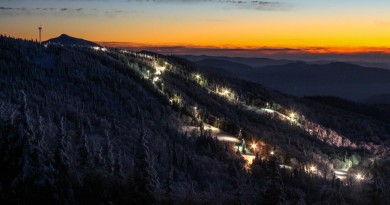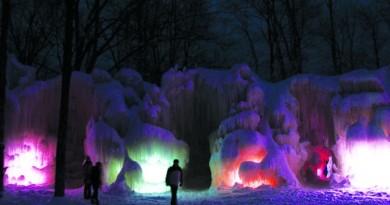Vermont’s New Backcountry: Glades, Huts and Adventures
Around the Green Mountains, backcountry skiing is exploding — thanks to new terrain, new huts and new backcountry programs.
Sometimes, Vermont can take you by surprise.
A few years back, Ben Leoni, then a student at Vermont Law School in South Royalton, took a trip up to Jay Peak. A snow squall had dusted the state on Friday and Saturday, and by the time Leoni and his friends reached the parking lot Sunday morning, a few inches of white blanketed the valley.
Up on the mountain, that blanket was two and half feet deep.
“Northern Vermont gets this great northwest wrap-around snow high on the ridgelines,” Leoni says. “It went bluebird that day, and it was probably some of the deepest skiing I’ve ever had in my life, and that includes skiing in Utah.”
Leoni was up on Big Jay, a mountain that sits south of Jay Peak’s summit. It’s accessible by skin track from a parking lot on Route 242 East, or through a backcountry ski gate at the top of the resort.
Now a lawyer in Portland, Maine, Leoni has skied all over New England, Canada, and out west. He’s the star of Ski the East’s “Working for the Weekend” web series, and is considered one of the better backcountry skiers in New England. For Leoni, when the snow’s good, nothing beats Vermont.
“The Chic Chocs have more open terrain, and out west, it’s a lot more open,” he says. “But there’s something wonderful and wild about the backcountry tree skiing in Vermont. With its twisted, old yellow birches and spruce forests, it’s beautiful. The trees protect the snow from wind, so when it does snow, the tree skiing in Vermont is really world-class.”
When it comes to America’s backcountry map, Vermont is on it. “People now travel from other states seeking the backcountry experience that Vermont provides,” Leoni says. “It’s grown a ton.”
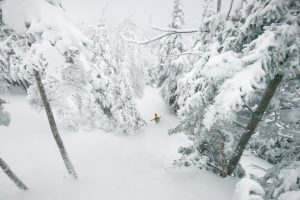
Sidecountry—terrain accessed just beyond the resort’s boundaries—has become increasingly popular, too, as skiers have been quietly cutting new glades and trails in Smuggler’s Notch, in the drainages of Sugarbush’s Slide Brook Basin, and at Mad River Glen and Killington.
In 2007, at Jay Peak, two men were arrested for cutting 873 trees to make a 60-foot-wide, three-quarter-mile long run down Big Jay—a serious environmental offense.
But in the last two years, Vermonters have pushed the boundaries in a legal way. Miles away from any ticket office, new glades are opening up, thanks to sanctioned work by the three official chapters of the Vermont Backcountry Alliance: the Rochester/Randolph Area Sport Trails Alliance (RASTA), the Northeast Kingdom Backcountry Alliance, and its newest member, the Dutch Hill Association of Skiers and Hikers (DHASH), based in Readsboro, Vt.
“Now with volunteer labor, participation of towns and the US Forest Service—backcountry skiing has really emerged from the shadows to being embraced by communities,” says David Goodman, author of multiple backcountry skiing guides, including Classic Backcountry Skiing: A Guide To The Best Ski Tours In New England. “I think we’re really on the cusp of a new era of skiing. We’re seeing the creation of all these new backcountry zones in Vermont, with organizations developing, what is, essentially, community-supported skiing.”
Pushing Boundaries
In 2015, Vermont became the first state in the nation to allow sanctioned trail cutting by volunteers on U.S. Forest Service land when ski glades were approved in the Green Mountain National Forest near Brandon Gap, just east of Rochester.
On February 18, 2017, the SE Group, which offers strategic planning and consulting, recorded trail data at Brandon Gap. It was a powder day and 171 people carved down a total of 20,000 vertical feet through glades created and maintained by RASTA. That weekend, those skier visits accounted for 17 percent of visits to nearby bars and restaurants, 18 percent of lodging, and 30 percent of the gear, retail and souvenir sales at local shops.
Now, volunteers all over the state are working with managers of federal and state land, and private landowners to create glades for public use. This year, there will be even more backcountry stashes than ever as organizations build on the mission RASTA first presented five years ago: “to provide safe and sustainable multiple-use trails for the enjoyment of area residents and visitors.”
In the fall of 2016, volunteers completed the first glades on Mount Hor in the Willoughby State Forest, marking the first project of its kind on state land. This year, the Northeast Kingdom Backcountry Alliance has expanded the number of glades and the range of difficulty in the Lake Willoughby area. “Last year, you were really talking three ski lines, and now we’ve more than doubled that,” said Mike Moriarty, NEKBC’s vice president. “It’s definitely exciting.”
For 2018 two lines have been added on Mount Hor—one close to the area’s parking lot, and another that branches off an existing summit trail—plus an easier, quick loop trail on the adjacent Bartlett Mountain. They have also developed intermediate glades on Kirby Mountain, on a sections of private property the owner designated for public use. “That will give us, more or less, access for all abilities, which is really exciting,” Moriarty says. “Last year, people gave us feedback that the lines up Mount Hor were pretty steep.”
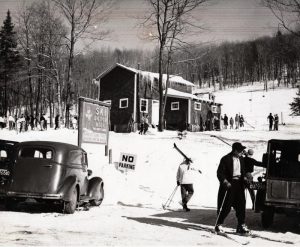
Down south, near the Massachusetts border, a group of backcountry enthusiasts have banded together to reincarnate Dutch Hill, a small ski hill off Route 100 in Readsboro that closed in 1985. Last fall, the US Forest Service designated an 87-acre northern section of Dutch Hill for non-motorized winter recreation. Volunteers, calling themselves the Dutch Hill Association of Skiers and Hikers (DHASH), became an official chapter of the Vermont Backcountry Alliance and this winter, they hope to reopen the hill as a backcountry trail system.
The terrain, with a 570-foot vertical drop, will include glades and 12 former ski slopes suitable for intermediate skiing and snowshoeing. Plans even include enlarging the sledding hill that has been a local favorite for decades. The revival marks the beginning of a multi-year trail maintenance project led by the U.S. Forest Service.
In central Vermont, the state’s department of forests is asking Vermonters for feedback on a new management plan for a 26,000-acre area that includes Camel’s Hump State Park. In an effort to curb illegal tree cutting and sustainably manage the forest for recreation, the plan has made room for backcountry glades. Though their location is yet to be determined, the department is soliciting public comments on the plan through Dec. 29, 2017.
In Rochester, RASTA volunteers have polished off the last of the glades in the Brandon Gap area, now home to 20,000 vertical feet of skiable terrain.
“The backcountry skiing around Brandon Gap has always been awesome, and the new trails just make that experience better,” said Ashar Nelson, an architect and longtime backcountry skier who lives in East Middlebury. “The lines are well thought-out. They’re narrow but plenty steep enough, reminiscent of the side-country at Mad River, just without the lifts. They also offer a good amount of vertical in one shot.”
And RASTA is already expanding. Recently, they’ve explored adding skiable terrain near Chittenden Brook, just east of Brandon Gap off Route 73, and have brought the proposal to the U.S. Forest Service.
The area is part of the Robinson Integrated Resource Project, a 60,000-acre parcel of land that requires specific management, as directed by the 2006 Green Mountain National Forest Land and Resource Management Plan. A decision from the Forest Service is expected in the spring.
Vermont Gets Cabin Fever

The Chittenden area may also become home to the first new hut in the Vermont Huts Association system. This past October, Vermont Huts executive director RJ Thompson made the announcement with a bang, hosting 170 people in a standing-room-only party at Outdoor Gear Exchange in Burlington—the biggest event the local outdoors store has ever seen.
Their first hut, though still permit-pending, is slated be built on Green Mountain National Forest land. With a kitchen and propane heat, it will bunk 10 people year-round. Yestermorrow Design/Build School in Waitsfield is designing and building the hut and, as long as the permitting is approved, it is scheduled to open in the summer of 2018.
Vermont Huts has proposed a second cabin in Sterling Forest, owned by the town of Stowe. The proposal, presented to the town’s select board in early November, details a hut that sleeps between eight and 15 people. It’s near the Catamount Trail, snowmobile trails maintained by Vermont Association of Snow Travelers. It’s also near hiking and mountain biking trails.
Vermont Huts’ website already lists 11 bookable cabins in their network, but all of these huts are currently managed by other organizations. Their mission is to build and manage additional huts that will link the existing ones. “The goal is end-to-end, hut-to-hut adventures,” Thompson says.
To achieve that goal, the organization has been collaborating with groups around the state.“We sat down with every chapter of the Vermont Mountain Bike Association between Killington and Stowe,” Thompson says, “and we also had representatives from the Catamount Trail Association, the National Forest Service and the Vermont Department of Parks and Recreation to get input on where potential routes of connectivity may occur, and where they already are. Based on the feedback from those local trail groups, along with state and federal government, we were able to identify approximate zones that would make sense for a new hut.”
Western mountain ranges have renowned networks of backcountry huts, like Colorado’s 10th Mountain Division’s 34 huts and San Juan huts. Quebec’s Chic Chocs are home to multiple cabins, the Adirondack Mountain Club maintains huts in New York, and the non-profit Maine Huts and Trails manages a system of year-round backcountry cabins on 80 miles of former logging trails.
It has long been a dream for Vermont to establish a similar network. Amy Kelsey, the executive director of the Catamount Trail Association, says this idea has come up over and over. “People call us all the time asking how they can ski hut to hut, and I try to cobble something together based on what’s out there right now, but it’s never the answer they really want,” she said.
If the Vermont Huts long-term vision comes through, it could allow skiers to travel in hut-to-hut style for the first time. Last winter renovations were completed at Bryant Camp, in the backwoods just off Bolton Valley Resort’s trails. From there, it’s possible to ski the Catamount Trail all the way to Stowe and the Trapp Family Lodge.
In Stowe, the Stone Hut (known for its mile-long waiting list) is a perfect example of the demand for backcountry accommodations in Vermont. In past years, the reservation system was lottery-based, and the hut would book up long before the season started.
But this year, the Vermont Department of Forests, Parks and Recreation, which manages the land, broke the reservation process into two phases. During Phase I, which was held from Sept. 5 until Nov. 10, the reservation system was lottery-based. Phase II, new this year, started Nov. 17 and allows reservation on a first-come, first-served basis for any dates still available.
With the existing (albeit rustic) Beaver Meadow cabin and the proposed Sterling Forest Cabin also in Stowe and within a day’s ski, it’s possible to see how a network of trails could begin to form.
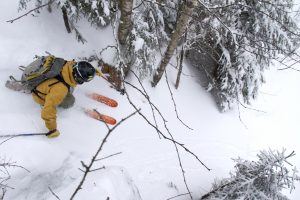
Getting Into Sidecountry
As the backcountry movement takes off, resorts are getting involved, too. Most list an uphill policy on their websites, and skinning is usually allowed in some capacity for a small fee. Some mountains have designated sidecountry, like Sugarbush’s Slide Brook Basin, which has a shuttle service at its base and Bolton Valley, which offers shuttles on certain weekends to Nebraska Valley.
And this year, two mountain resorts are pushing even farther into the backcountry movement. Bolton Valley’s goal, according to Backcountry Program Director, Adam DesLauriers, is to be the “first slopeside backcountry center in the East.”
DesLauriers grew up skiing at Bolton, the resort his grandfather Roland founded in 1966 and his father Ralph owned and built up until 1997 when he sold it. In April, 2017, the DesLauriers family bought back Bolton and Adam envisions it as a center and resource for backcountry skiing.
Extreme and backcountry skiing was just part of what Adam did back then, often along with his Extreme Team brothers (of Warren Miller and other ski movie fame), Rob and Eric DesLauriers, and Dan and John Egan (brothers who still guide at Sugarbush and Killington, respectively).
The brothers were known for skiing just about any terrain, fast and fluidly, and the sidecountry of Bolton and Sugarbush, were their playgrounds.
Now, DesLauriers is inviting others to play there. “We want to offer professional guiding and instruction, complete rental equipment and easily accessible terrain right from the base of the alpine/Nordic ski area,” he says.
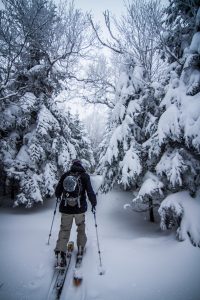
This year, Bolton will host a rental fleet of Dynafit backcountry boots, skis and bindings.
“What we want to do with our backcountry program is teach people about the equipment, about the right apparel, technique, and the rules about the backcountry to stay safe,” says Josh Arneson, Bolton’s resort’s public relations director.
And in Southern Vermont, Magic Mountain has been developing a backcountry program it will debut this season. The mountain has always welcomed and encouraged Alpine Touring. Last year, it expanded its welcome mat to uphillers with the “Hike One, Ride One” program, which offers a token for a free same-day lift ride to anyone who skins to the top of the summit Red Lift.
This year, Magic will take it a step further. In a partnership with Salomon Skis, it will offer a full-service AT equipment demo and rental center featuring the Salomon QST line. There will also be AT snowboard rental equipment featuring Weston split boards.
While the rise of fat skis, light touring bindings and a wider array of backcountry boots has fueled the surge in ski touring, one of the biggest barriers to backcountry skiing has been the high cost of gear. Backcountry skis and bindings cost a pretty penny and rental gear has been largely unavailable.
Magic will also host guided gladed, sidecountry and backcountry tours out of its Learning Center. Uphill Clinics will be offered on January 20th, February 10th and March 10th.
“Magic is now a growing recreational resource to our community and customers,” said resort president Geoff Hatheway. “No doubt we’re a bit unconventional and counter-cultural here, so we enthusiastically embrace unique ways to get up and down this challenging mountain, which enhances Magic’s spirited, sport-centric vibe. New Alpine Touring and snowshoe events and offerings fits with that mindset.”
Both Magic and Bolton will host a series of events to introduce the public to backcountry. Magic will host three race series events that will kick off in December. Winter Wild, “an uphill event with a twist,” begins Sunday, Dec. 17. Magic will also bring back the NE Rando Series on Jan. 6. Finally, a the WMAC Dion Snowshoes Series race will take place on Jan. 7, combining athletes’ cumulative times from both events.
Bolton will hold a two-hour Intro to the Backcountry classes on Saturday mornings, a half-day group backcountry ski on Sunday mornings, and guided backcountry lessons whenever requested. Bolton will also bring back its Tuesday night ski-mountaineering, or “skimo,” race series, during which skiers skin uphill and ski downhill.
“Our goal,” Arneson said, “is to take that first-time person from saying to themselves, ‘I’m not sure how this backcountry stuff works,’ to ‘Oh, that’s what it’s all about, now I’m ready to go.’ Backcountry skiing is one of those things that will pick up momentum and continue to grow, and we’re just at the beginning of where it might be going.”

